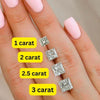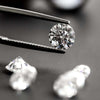
Diamond Cut Quality Score: Evaluating Brilliance and Precision
Assessing the beauty and brilliance of a diamond often comes down to the quality of its cut. The cut is universally recognized as a critical factor in a diamond's overall value.
I understand that the cut quality score functions as a comprehensive rating system for evaluating how well a diamond has been shaped and faceted.
The better the cut, the more the diamond will sparkle, as this score reflects the diamond's ability to reflect light.
My knowledge allows me to recognize that the cut of a diamond is analyzed on several parameters, including symmetry, proportions, and polish.
Table Of Contents
- Understanding Diamond Cut Quality
- Cut Grades and Their Meanings
- The Four Cs of Diamonds
- Analyzing Diamond Proportions
- Facets and Their Effect on Light Performance
- Diamond Shape and Its Impact on Cut Quality
- Decoding Grading Reports
- Buying Considerations
- Historical and Modern Perspectives
- Visual Tools and Resources
- Final Thoughts
- Frequently Asked Questions
Proportion refers to the diamond's depth and width, and how they relate to the diameter. Meanwhile, symmetry evaluates the precision in the arrangement and alignment of the diamond's facets.
A high-quality cut means the diamond will have maximum brilliance, fire, and scintillation, captivating the viewer's eye with its dazzling display.
When examining diamonds, the Gemological Institute of America (GIA) considers the cut grade to be paramount among the other characteristics—color, clarity, and carat weight, which are collectively known as the Four Cs.
The grading system they have developed provides a scale for measuring the cut quality, helping both experts and consumers make informed choices.
A diamond with a high cut score is meticulously crafted to showcase its best features, making cut quality an essential consideration for anyone interested in purchasing or evaluating diamonds.
Understanding Diamond Cut Quality
When I discuss diamond cut quality, I focus on how it affects a diamond's interaction with light. Its ability to sparkle with brilliance and fire hinges on the cut quality.
A well-cut diamond will reflect light internally from one mirror-like facet to another and disperse it through the top of the gem, leading to a display of brightness, fire, and scintillation.
The Importance of Cut in Diamond Quality
The cut of a diamond is crucial—it's what gives a diamond its sparkle. When cut to high-quality standards, diamonds exhibit a balance of brightness (white light reflections from the surface and inside the diamond), fire (flashes of color), and scintillation (the sparkle when moving the stone).
An ideal cut will reflect most of the light that enters it, resulting in a luminous and sparkly diamond.
Evaluating Cut Proportions and Angles
The proportions and angles of a diamond cut determine how light is reflected within the stone and, ultimately, how light exits the diamond to the viewer's eye.
Specific angles and proportions are key to maximizing the light that reflects back out of the top of the diamond.
| Proportion/Angle | Ideal Range | Effect on Brilliance |
|---|---|---|
| Table Size | 52% - 64% | Optimal table size allows for maximum light dispersion and reflection. |
| Crown Angle | 30° - 36° | Proper crown angle ensures proper light reflection for brilliance. |
| Pavilion Angle | 40.6° - 41.8° | Correct pavilion angle enables light to reflect back through the crown for sparkle. |
| Girdle Thickness | Thin to Medium | Uniform girdle thickness helps distribute light evenly throughout the diamond. |
| Culet Size | None to Small | Avoiding a large culet prevents light leakage and enhances brilliance. |
| Facet Symmetry | Excellent | Proper alignment and symmetry of facets ensure maximum light return. |
I ensure that the table (top surface facet), crown (top part of the diamond), girdle (midsection), and pavilion (bottom part) are all aligned harmoniously to ensure optimal reflection and refraction of light.
Role of Symmetry and Polish in Cut Quality
Symmetry and polish are integral aspects of cut quality. Symmetry refers to the precise alignment and positioning of the diamond's facets, while polish describes the smoothness of those facets.
If a diamond is symmetrical and well-polished, light can travel and exit through the diamond in a balanced manner, contributing to the stone's overall brilliance and beauty.
It's the exactness of the facet shapes and the cleanliness of their lines that make a diamond look symmetrically sparkly under the light.
| Excellent | Very Good | Good | Fair | Poor |
|---|---|---|---|---|
| 90-100 | 80-89 | 70-79 | 60-69 | Below 60 |
Cut Grades and Their Meanings
In assessing diamond quality, the cut grade is crucial as it influences a diamond's brilliance and overall beauty. The Gemological Institute of America (GIA) and the American Gem Society (AGS) are two principal entities that have established widely accepted cut grading systems.
GIA Cut Grade Scale
The GIA cut grade scale categorizes round brilliant cut diamonds within the D-to-Z color range into five distinct grades:
| Cut Grade | Meaning |
|---|---|
| Ideal Cut | Optimally proportioned for maximum brilliance and fire. Reflects nearly all light that enters the diamond. |
| Excellent Cut | Reflects most light that enters the diamond, creating exceptional sparkle and brilliance. |
| Very Good Cut | Reflects a high percentage of light, resulting in excellent sparkle and brilliance. Slightly less precise than Excellent Cut. |
| Good Cut | Reflects a majority of light, offering good sparkle and brilliance. Represents an excellent value option. |
| Fair Cut | Reflects some light but may lack optimal sparkle and brilliance. Suitable for budget-conscious buyers. |
| Poor Cut | Reflects minimal light, resulting in dull appearance. Generally not recommended for diamond purchases. |
AGS Cut Quality Parameters
The AGS cut quality parameters focus heavily on how well a diamond has been cut to interact with light. The AGS uses a numbered scale from 0 to 10, with:
- 0 indicating "Ideal cut": Diamonds with an AGS grade of 0 are cut to the highest standards of precision and reflect light to create maximum brightness and fire.
- Grades 1 to 10: These grades descend in quality, with each number indicating a graded decrease in how effectively the diamond interacts with light.
Additional Grading Systems
Other grading systems also exist beyond the GIA and AGS, though these are less common. These may utilize different terminology or criteria for assessment but ultimately aim to approximate a diamond's interaction with light to give shoppers an idea of the diamond's visual appeal. Each system is intended to provide a clear understanding of how well a diamond has been cut to maximize its beauty, though standards and criteria can vary.
The Four Cs of Diamonds

In determining a diamond's beauty and value, I consider the interplay of the Four Cs: carat weight, color, clarity, and cut. These factors are critical in assessing a diamond's overall quality and how it will appear in various settings.
Carat Weight and Its Influence on Cut
Carat weight defines the size of a diamond, but its impact on cut quality is significant. A well-cut diamond, regardless of carat weight, will exhibit superior brilliance and fire.
This is because a well-proportioned diamond ensures maximum light return. However, a larger carat weight can sometimes hide imperfections in the cut, misleading the untrained eye.
Color and Its Interplay with Cut Quality
Diamond color ranges from colorless to yellow, with colorless being the most sought after. Cut quality can enhance a diamond's perceived color; a well-cut diamond can appear more colorless as it reflects more light.
Conversely, a poorly cut diamond might retain more color, resulting in less sparkle.
Clarity's Contribution to Overall Aesthetics
Clarity measures the absence of inclusions and blemishes in a diamond. While a flawless clarity grade is rare and valuable, the cut can often overshadow minor imperfections.
A diamond with a high-quality cut will reflect light in such a way that can mask certain clarity characteristics, making them less visible to the naked eye.
How Cut Affects Overall Diamond Value
Cut is the most crucial aspect of the Four Cs in terms of how it influences a diamond's luminance and visual appeal. An expertly cut diamond commands a higher value as it demonstrates maximum brilliance and scintillation.
Diamond pricing is sensitive to cut quality since it drastically affects appearance, with precision and craftsmanship being premium factors in valuation.
Analyzing Diamond Proportions
In assessing diamond cut quality, I prioritize analyzing diamond proportions such as table and depth percentages, as well as crown and pavilion angles. These factors are crucial in determining how well a diamond will interact with light.
Evaluating Table and Depth Percentages

The table percentage is the width of the top facet of a diamond relative to the girdle diameter. Ideal table percentages vary but are typically preferred to be between 53% and 58% for round diamonds.
The depth percentage, calculated by dividing the depth of the diamond by its diameter, plays a pivotal role as well. Optimal depth percentages generally range from 59% to 62.6% for round cut diamonds.
- Ideal Table Percentage: 53% - 58%
- Ideal Depth Percentage: 59% - 62.6%
Significance of Crown and Pavilion Angles
The crown angle is the angle formed between the girdle and the top part of the diamond. I find that a crown angle that falls between 33.5° and 35° is conducive to a high level of fire and brilliance.
The pavilion angle measures the bottom part of the diamond and should generally be between 40.6° and 41°.
- Ideal Crown Angle: 33.5° - 35°
- Ideal Pavilion Angle: 40.6° - 41°
Facets and Their Effect on Light Performance
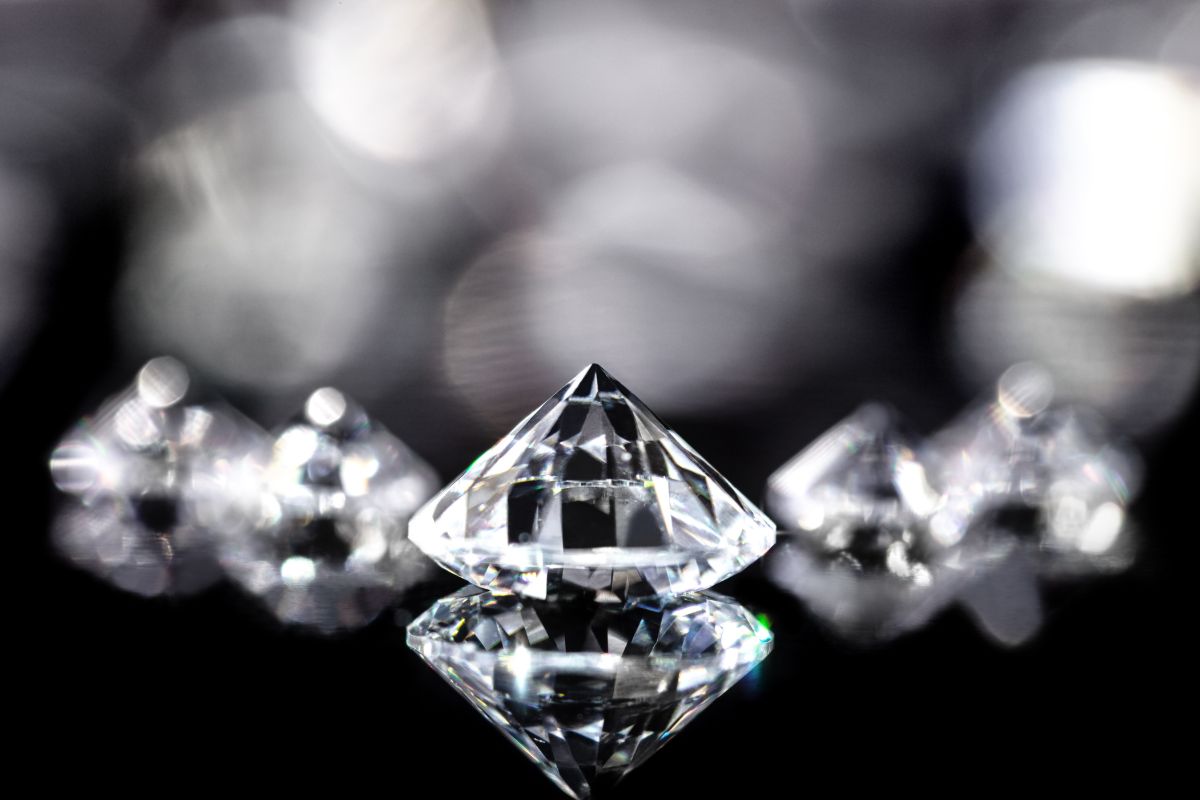
The quality of a diamond's cut is integral to its overall beauty, primarily determined by how its facets interact with light. These intricately planned surfaces either reflect light to maximize brilliance or disperse it to enhance fire.
Interplay of Facets with Light and Sparkle
The facets of a diamond are designed to manipulate light in a manner that maximizes sparkle. When light enters the diamond, it refracts inside and reflects from one facet to another.
This internal refraction and subsequent reflection contribute to the sparkle we see, which is technically referred to as scintillation.
Carefully calibrated angles and sizes of these facets are crucial in ensuring a balance between white and colored light reflections—known as brilliance and fire, respectively.
Optimizing Brilliance and Fire Through Faceting
To optimize brilliance, craftsmen cut diamonds into specific shapes with precise angles. The pavilion angle, especially, is instrumental as it affects how light travels within the diamond. Ideally, this angle should be close to 41° to facilitate effective internal reflection. The interplay between light and the facets enhances the diamond's fire as well, which is the dispersion of white light into its spectral colors. A well-executed facet pattern ensures that as the diamond moves, a dynamic display of sparkle and color is consistently visible.
Diamond Shape and Its Impact on Cut Quality

The cut quality of a diamond is profoundly influenced by its shape, each with its unique characteristics affecting light performance. I will explore the significance of shape on cut quality and why certain shapes, especially the round brilliant diamond, are renowned for their superior light reflection.
Variations in Popular Diamond Shapes
Different diamond shapes offer varied aesthetic appeals and reflect light differently due to their facet arrangements.
Shapes such as the oval, marquise, pear, and heart are classified as fancy shapes and have different proportions and facet patterns, which influence the way light is captured and reflected. The cut quality of these shapes is not standardized by a single grading system like the round diamonds, making it more complex to compare their brilliance and fire directly.
- Oval, Marquise, Pear, Heart: These shapes have elongated or pointed ends, which can contribute to a bow-tie effect, a dark area in the center due to light leakage.
- Emerald and Asscher: These are step-cut diamonds with larger, open facets that showcase the diamond's clarity but may not display as much brilliance as brilliant-cut diamonds.
- Princess, Radiant: These shapes are mixed cuts combining step-cut and brilliant-cut facets. They are sought after for their relatively high degree of sparkle among fancy shapes.
Round Brilliant Diamonds and Cut Excellence
The round brilliant diamond is universally celebrated for its cut precision, maximizing light return more effectively than any other shape. The round diamond's facet pattern is engineered for optimal brilliance, fire, and scintillation. Grading entities, such as the GIA, have developed rigorous criteria for round brilliant diamonds, evaluating their cut quality on a scale from Excellent to Poor. The round brilliant cut's proportions, including the table percentage, depth percentage, crown angle, and pavilion angle, are meticulously calculated to enhance the stone's interaction with light.
- Cut Grades:
- Excellent: Optimal proportions for maximum brilliance and fire.
- Very Good: Slightly outside ideal ranges but still high in light performance.
- Good: More noticeable deviation from optimal proportions, yet still an appealing choice.
- Fair/Poor: Proportion ranges that can diminish a diamond's brightness and overall appearance.
Decoding Grading Reports
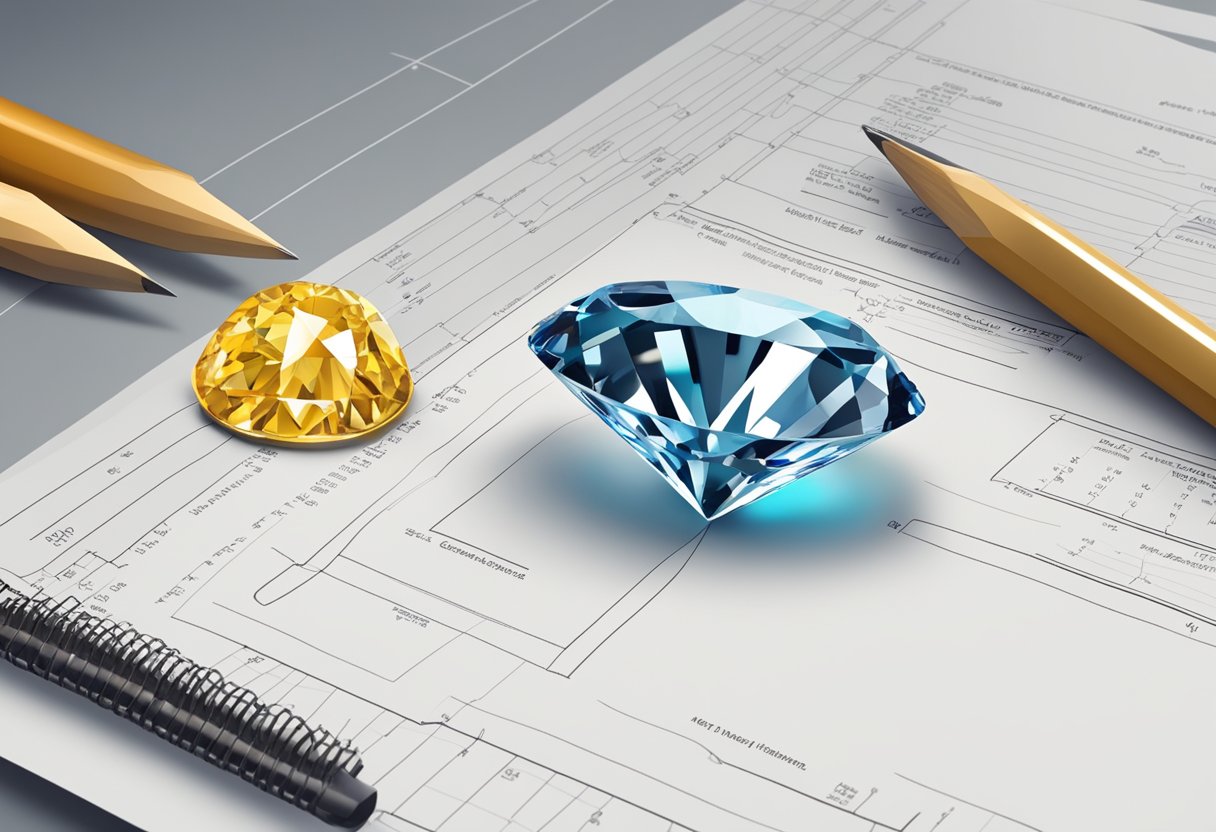
When I examine grading reports, my focus is on the specifics of diamond quality and authenticity outlined by authoritative institutions. These reports are crucial in determining the value and desirability of a diamond based on standardized criteria.
Understanding a GIA Diamond Grading Report
The Gemological Institute of America (GIA) is a leading authority in diamond certification and its grading reports are highly esteemed in the diamond industry. A GIA Diamond Grading Report assesses:
- Color: Ranked on a scale of D (colorless) to Z (light color).
- Clarity: Evaluated based on the absence of inclusions and blemishes.
- Cut: Graded from Excellent to Poor, indicating how well a diamond interacts with light.
- Carat Weight: Measurement of a diamond's weight, not size.
The report includes a plotted diagram of clarity characteristics and a graphic representation of proportions. The GIA Cut Grade is applicable only to standard round brilliant diamonds in the D-to-Z color range and is a composite of various dimensions and angles.
Other Certifications and What They Indicate
Aside from GIA, there are other organizations like the International Gemological Institute (IGI) that also provide diamond certifications. These reports might offer a different layout or focus but generally cover the same core aspects of diamond grading. However, the criteria and strictness of grading can vary among institutions. It's important for me to understand the reputation and standards of different grading bodies when comparing reports.
Interpreting Grading Reports for Consumers
As a consumer, interpreting a diamond grading report can seem daunting. Yet, understanding these reports is pivotal in making an informed decision.
Consumers should recognize that while the GIA Diamond Grading Report gives an objective analysis, aesthetic preference plays a significant role too. For instance, some may prefer the unique character of diamonds with slight color, despite the premium on higher-grade colorless stones.
Additionally, the GIA Diamond Dossier is a more compact report for diamonds less than 1 carat, which includes a microprint line that reflects light and helps confirm the report's authenticity. As I navigate through different grading reports, I consistently remind consumers that a diamond's intrinsic beauty is ultimately determined by personal taste and the quality as documented by these reputable certifications.
Buying Considerations
When purchasing a diamond, I prioritize cut quality as it directly influences the gem's beauty and value. An excellent cut can maximize brilliance and fire, ensuring the diamond sparkles optimally. Now, let's consider how to navigate cut quality during the purchase process.
Selecting a Diamond Based on Cut Quality
In selecting a diamond, I look for a cut score that assures the highest level of sparkle. I take into account the proportion, symmetry, and polish of a diamond as these factors determine how well it interacts with light. The cut grades range from 'Excellent' (Ideal) to 'Poor'. An 'Excellent' cut often represents the top tier of cut quality, providing maximum brilliance and fire.
Impact of Cut on Diamond Pricing
I understand that the price of a diamond is significantly influenced by its cut quality. Higher cut scores correlate with higher prices due to the improved appearance and light performance.
For example, a diamond with a 'Very Good' cut may cost less than one with an 'Excellent' cut grade but still reflects a substantial amount of light. It's a balance of finding the best value within my budget.
Assessing Mounted vs. Loose Diamonds
If I'm considering mounted diamonds, I keep in mind that assessing cut quality might be more challenging than with loose diamonds.
Mounted stones can hide certain cut flaws or make it difficult to assess symmetry and proportions. Therefore, I often opt for loose diamonds, which allow for a thorough evaluation of cut quality. Plus, the carat size is easier to verify when the diamond is unmounted, ensuring I get the intended value for my purchase.
Historical and Modern Perspectives
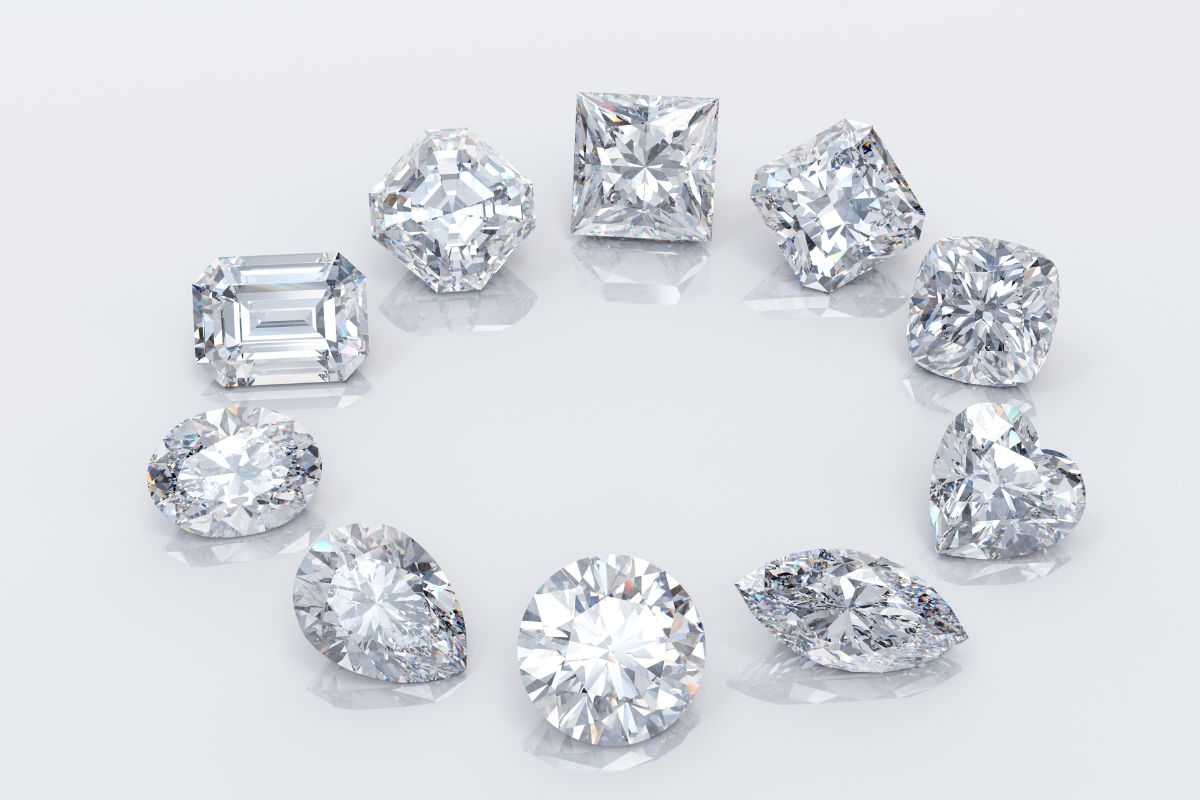
In this section, we'll explore the shift from early diamond cutting methods to contemporary standards, and examine the pivotal role played by Marcel Tolkowsky in revolutionizing diamond cut quality.
Evolution of Cut Quality Standards
Historically, diamond cutting was about maximizing carat weight rather than brilliance or fire. In the early days, diamonds were often hand-cut, leading to less standardized cuts.
With advancements in technology and design, there was a shift towards cuts that enhance a diamond's light performance.
The Gemological Institute of America (GIA) introduced a significant change in the early 1950s by developing the International Diamond Grading System, which brought a more systematic approach to assessing diamond quality, including cut. This system included the 4Cs—color, clarity, cut, and carat weight—as the primary criteria for diamond evaluation.
The modern perspective prioritizes the cut quality as a crucial determinant of a diamond's beauty and value. It emphasizes precise proportions, symmetry, and polish, which are now assessed with advanced tools and software for a more objective and consistent grading.
Contributions of Marcel Tolkowsky to Diamond Cutting
Marcel Tolkowsky, an engineer and third-generation diamond cutter, dramatically impacted diamond cutting with his 1919 thesis, "Diamond Design."
Through meticulous calculations, Tolkowsky determined the ideal proportions for a round brilliant cut diamond to achieve maximum brilliance and fire. His work laid the foundation for what is now known as the "Ideal Cut."
Tolkowsky's design still informs craftsmanship in the diamond industry. His contribution was not merely to individual stones but to the standards that govern modern diamond cutting techniques. His mathematical approach intertwines design and craftsmanship to bring out a diamond's full potential. Contemporary cutters continue to utilize his principles, paired with state-of-the-art technology, to craft diamonds that meet today's high expectations for quality and light performance.
Visual Tools and Resources

I find that visual tools and resources are crucial for comprehending the complexities of diamond cut quality scores. These aids can provide detailed insight into how different dimensions and proportions affect a diamond's brilliance and fire.
Using Diamond Cut Charts and Visual Illustrations
Diamond cut charts are indispensable tools that I use to evaluate the cut quality of diamonds. These charts often display ideal proportions and angles for various diamond shapes, correlating to the best possible light performance.
Take the round brilliant cut, for example. A chart might illustrate the preferred range for the depth percentage, which typically falls between 59% and 62.3%. The table percentage—often ideal at 53% to 58%—is another critical factor indicated on these diagrams.
Visual illustrations are equally helpful. They depict the diamond's face-up appearance, allowing me to assess how a diamond's cut might influence its perceived size and fire.
For instance, I might use illustrations to compare the girdle diameter in millimeters and how it affects the overall look of the stone.
Educational Videos and Imaging Technology
I heavily rely on educational videos that provide a dynamic view of diamond cuts in motion. These resources can explain complex concepts such as scintillation and fire in a way that is accessible and easy to understand.
Videos also often showcase differences between well-cut and poorly-cut diamonds, providing me with live examples of how cut quality influences a diamond’s sparkle.
Imaging technology, such as high-resolution photography and 360-degree video, has been transformative.
It allows me to inspect the diamond with an almost hands-on experience without needing physical proximity to the stone. This technology often reveals details like symmetry and polish that can be difficult to discern with the naked eye.
I can observe the light patterns and reflections as if examining the diamond in person, ensuring that I make the most informed decisions possible about a diamond's cut quality.
Final Thoughts

In discussing diamond cut quality, I've presented various facets significant to making an informed purchase. My intention in this conclusive section is to encapsulate those insights, aiding readers in consolidating their knowledge.
Consolidating Knowledge for an Informed Purchase
Understanding the cut quality score is critical before finalizing a purchase. This metric provides a reliable indication of a diamond's brilliance and fire. It embodies the precision of its facets in terms of proportion, symmetry, and polish.
While assessing diamonds, I harness both my accumulated knowledge and objective analytics. This helps ensure that the cut quality score reflects an authentic appraisal of cut precision.
To make an informed decision, I consider tools like StoneAlgo's scale and the Holloway Cut Adviser. These instruments lend me actionable insights, fortifying my ability to discern between a merely acceptable cut and an exceptional one.
Finally, I always remind myself that a diamond's value doesn't solely rest on its cut quality score. Aspects like carat weight, clarity, color, and the diamond's provenance play substantial roles in my purchase decision. It's through the integration of this knowledge and the understanding of the relative importance of a diamond's attributes that I can confidently select a gem that doesn't just fulfill technical criteria but also resonates with personal preference and value.
Also Read
Frequently Asked Questions
In this section, I'll address some common inquiries regarding the cut quality of diamonds, which significantly impacts their sparkle and overall beauty.
How is the quality of a diamond's cut assessed?
The quality of a diamond's cut is evaluated based on its proportions, symmetry, and polish. These factors influence how light interacts with the diamond, affecting its brightness, fire, and scintillation.
What is the difference between ideal and excellent cut grades in diamonds?
An ideal cut grade is often considered the best, with proportions that maximize brilliance and fire within a round brilliant diamond. Excellent cut grades also provide high brilliance but have slight variations from the optimal proportions of an ideal cut.
How does the GIA grade the cut of a diamond?
The Gemological Institute of America (GIA) grades diamond cuts using a standardized system ranging from Excellent to Poor. This system assesses the cut by examining the diamond's ability to reflect light, with the highest grades indicating a diamond's superior light performance.
What factors contribute to the diamond cut quality score?
Factors that contribute to the diamond cut quality score include the diamond's depth, table, girdle width, crown angle, and pavilion depth. The precise alignment of each facet also plays a crucial role.
Which cut grade should I look for to ensure a high-quality diamond?
To ensure a high-quality diamond, look for a cut grade of Excellent or Ideal. These diamonds will exhibit maximum brilliance and sparkle, the most desired attributes in a diamond.
How does the cut of a diamond affect its overall appearance and brilliance?
The cut of a diamond drastically affects its appearance and brilliance. A well-cut diamond will exhibit a balance between brightness, fire, and scintillation. Meanwhile, a poorly cut diamond may appear dull and lifeless by comparison.
Checkout some of our top collections:
Leave a comment
Please note, comments must be approved before they are published.

